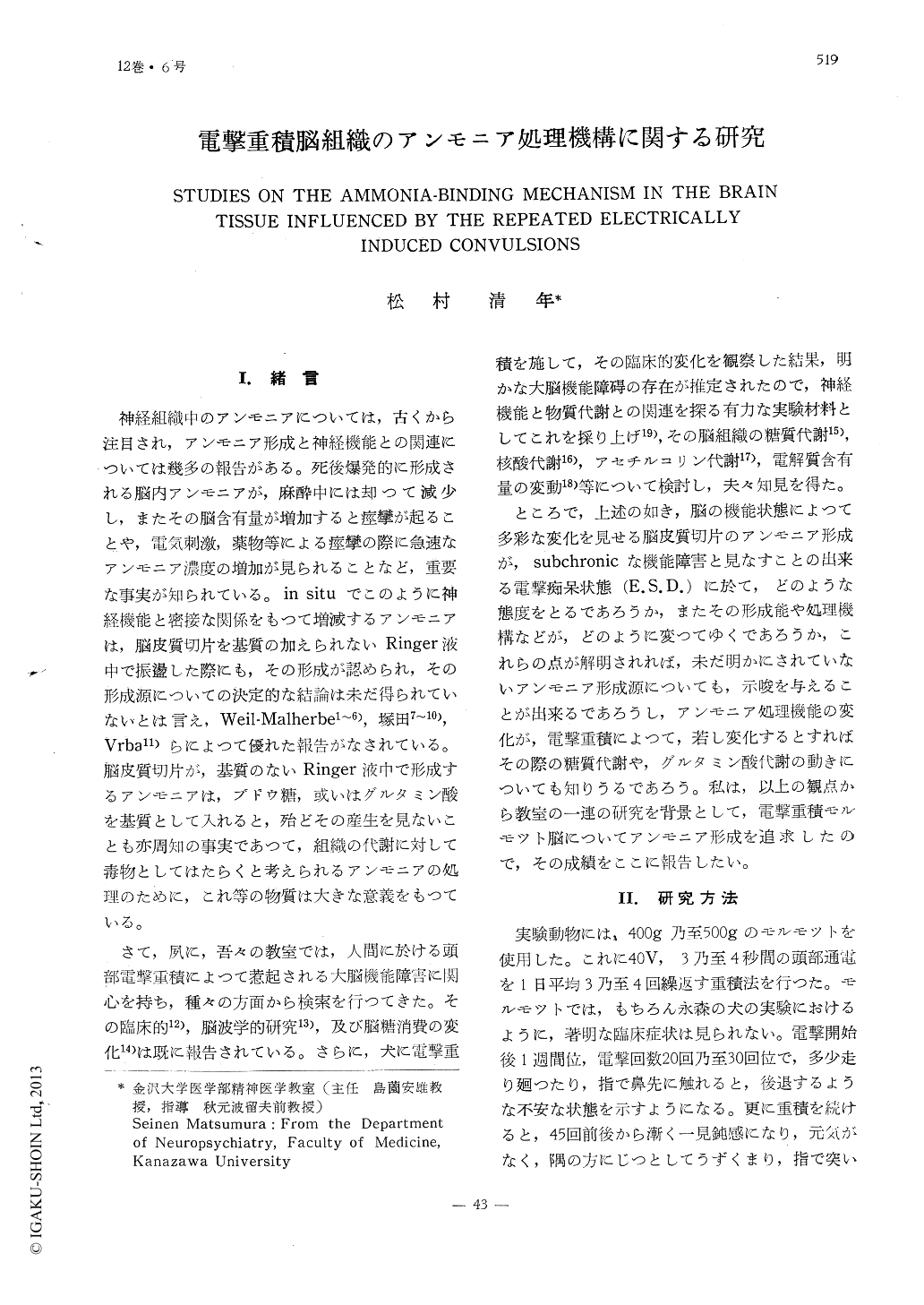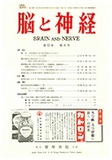Japanese
English
- 有料閲覧
- Abstract 文献概要
- 1ページ目 Look Inside
電撃重積動物の脳代謝,とくにアンモニア処理機構を追求する目的で本実験を行い,併せて基質代謝に及ぼす電撃重積の影響を検索した。
成熟モルモツトに,頭部通電による電撃重積を施し,重積回数50回以下(電撃重積I群)50回以上(同II群)に大別した。
正常対照群,電撃重積I,II群のモルモツトの大脳皮質切片を,基質を含まないKrobs-Ringer液,ブドウ糖,焦性ブドウ酸,グルタミン酸,α-ケトグルタール酸を基質に含むmediumに夫々浮遊させ,アンモニア形成量,酸素消費量を測定して得た成績は次の如くである。
1)正常対照群では,グルタミン酸を基質に用いた場合が最も酸素消費量が大ぎく,焦性ブドウ酸,α-ケトグルタール酸,ブドウ糖がこれに次ぐ。
アンモニア形成量は,基質なしの場合が最も生成が大きく,α-ケトグルタール酸は初めアンモニア形成を抑制するが,後その能力を失い,ブドウ糖,焦性ブドウ酸,グルタミン酸は強くアンモニア形成を抑制する。
2)電撃重積群では,各mediumともに酸素消費量に関しては,正常対照群との間に差異を認めない。
These experiments were made for the pur-pose of studying the ammonia binding mec-hanism in the brain tissue of a guinea pig the functions of which were disturbed by me-ans of the repeated electric convulsions.
The electrical convulsions were applied on two groups of adult guinea pigs; 1st group on which the electrical convulsions were re-peated less than 50 times, while 2nd group more than 50 times.
The results obtained by measuring the am-monia formation and the oxygen uptake of the respective brain slices suspended in Kre-bs Ringer phosphate saline which contained glucose, pyruvate, glutamate or α-ketogluta-rate as substrate, were as follows.
1) The oxygen uptake by the normal gui-nea pig brain slices is the greatest in the presence of glutamate as substrate, and as to the other substrates the order of the gre-atness is: pyruvate, α-ketoglutarate, glucose.
The ammonia formation by that is the greatest in the absence of substrate. Ammonia formation in the presence of α-ketoglutarate, suppressed at the beginning of incubation,is observed in a short time.
When glucose, pyruvate or glutamate are added as substrate, ammonia formation is clearly suppressed.

Copyright © 1960, Igaku-Shoin Ltd. All rights reserved.


